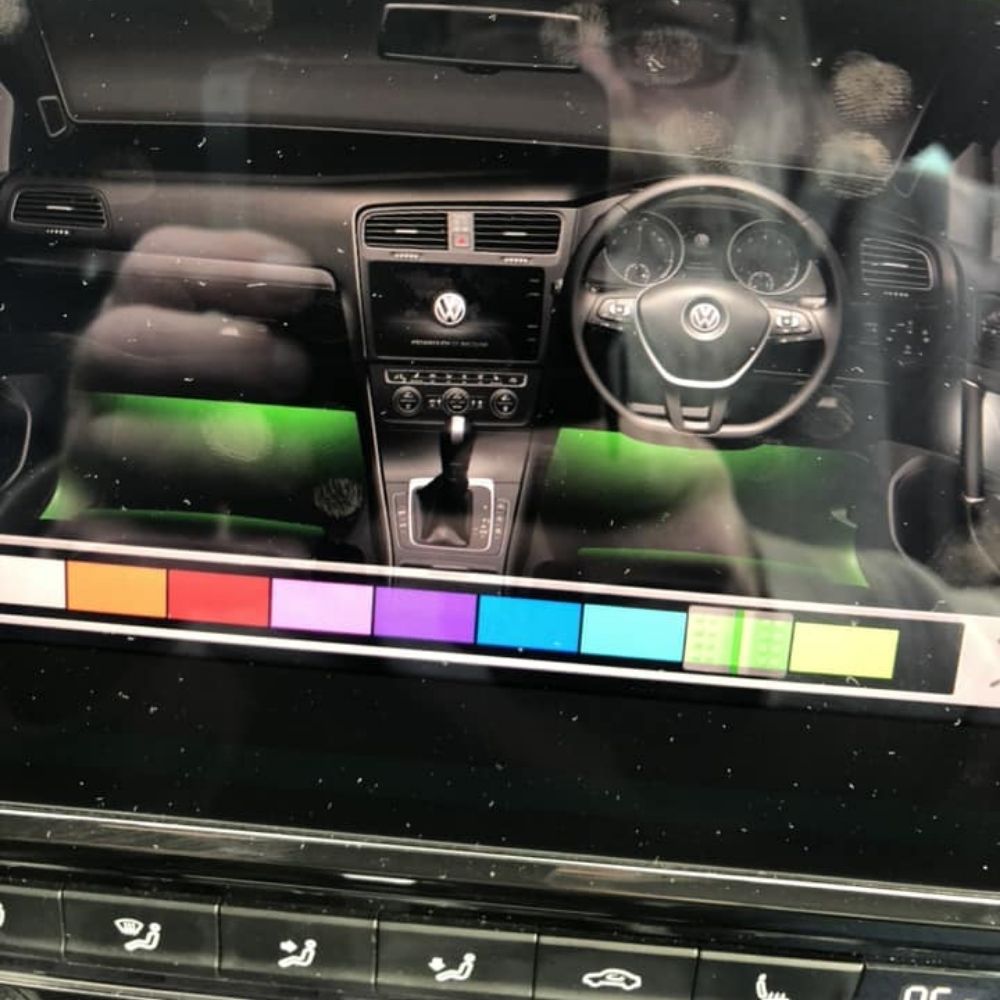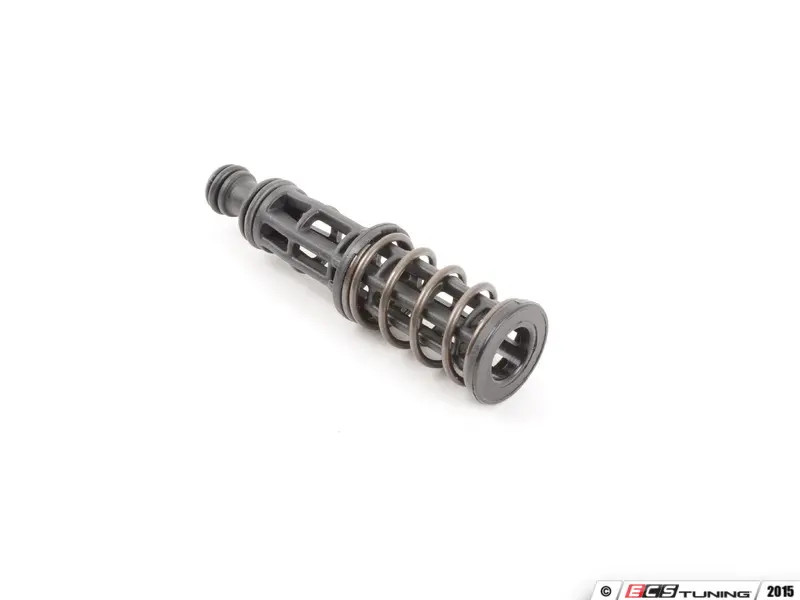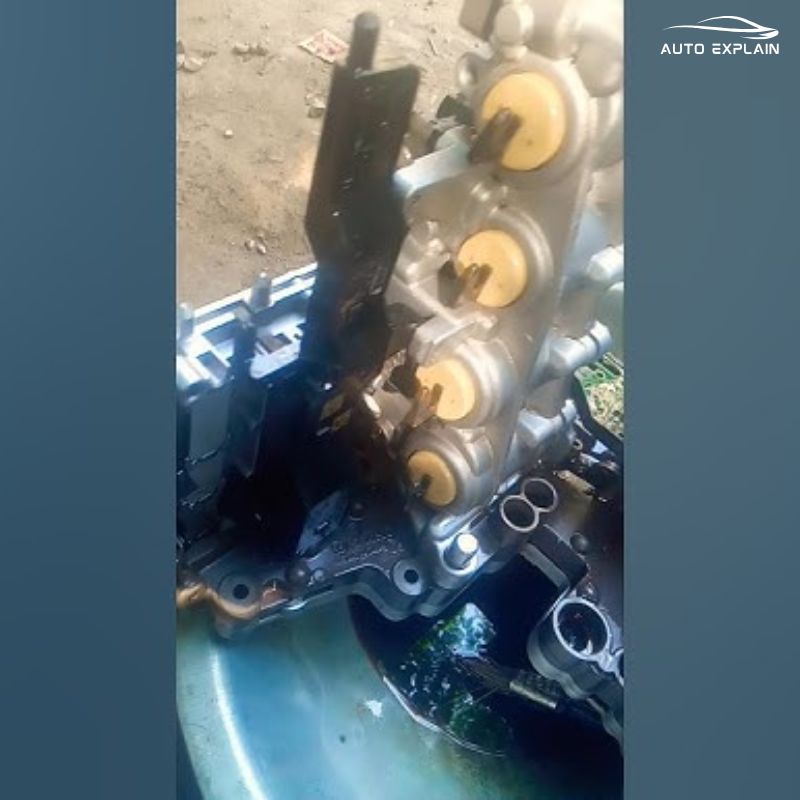
What Does DTC 01056 Audi Indicate and How to Fix It?
Contents
- 1. What is DTC 01056 on an Audi and What Does it Mean?
- 2. What are the Common Causes of DTC 01056 in Audi Vehicles?
- 3. What are the Symptoms of an Audi with DTC 01056?
- 4. How to Diagnose DTC 01056 in Your Audi: A Step-by-Step Guide
- 5. Step-by-Step Guide to Fixing DTC 01056 in an Audi
- 6. What are the Tools Needed to Fix DTC 01056 on an Audi?
- 7. What are the Potential Costs of Ignoring DTC 01056?
- 8. Can AutoExplain.com Help Me Remotely Diagnose and Fix DTC 01056?
- 9. How Can I Prevent DTC 01056 From Recurring in My Audi?
- 10. FAQ About DTC 01056 on Audi Vehicles
Dtc 01056 Audi signifies a malfunction in the Exhaust Gas Recirculation (EGR) system, potentially leading to reduced engine performance, increased emissions, and illumination of the check engine light. Resolving this issue promptly is crucial for optimal vehicle operation and environmental compliance; AutoExplain.com offers expert remote diagnostic and repair services to help you address this and other complex automotive issues efficiently, minimizing downtime and maximizing performance. Explore solutions encompassing EGR valve diagnostics, component testing, and ECU reprogramming to get your Audi back on track.
1. What is DTC 01056 on an Audi and What Does it Mean?
DTC 01056 on an Audi indicates a problem within the exhaust gas recirculation (EGR) system, specifically related to the EGR valve’s control circuit. This diagnostic trouble code (DTC) suggests that the engine control unit (ECU) has detected an issue with the EGR valve’s operation, which can result in reduced engine efficiency, increased emissions, and potential damage to other engine components if left unaddressed.
- Exhaust Gas Recirculation (EGR) System: The EGR system is designed to reduce nitrogen oxide (NOx) emissions by recirculating a portion of the exhaust gas back into the engine’s intake manifold. This process lowers the combustion temperature, which in turn reduces the formation of NOx.
- EGR Valve: The EGR valve controls the amount of exhaust gas that is recirculated. It opens and closes based on signals from the ECU, which takes into account factors such as engine load, speed, and temperature.
- Engine Control Unit (ECU): The ECU is the central computer in the vehicle that manages various engine functions, including the EGR system. It monitors sensors throughout the engine and adjusts settings to optimize performance and emissions.
- Control Circuit: The control circuit refers to the electrical circuit that operates the EGR valve. This includes the wiring, connectors, and the valve’s internal components. A malfunction in this circuit can prevent the EGR valve from functioning correctly.
- Nitrogen Oxide (NOx): NOx gases are harmful pollutants that contribute to smog and acid rain. They are formed when nitrogen and oxygen react at high temperatures during the combustion process.
2. What are the Common Causes of DTC 01056 in Audi Vehicles?
The common causes of DTC 01056 in Audi vehicles range from electrical faults to mechanical issues within the EGR system itself. Addressing these potential causes systematically can help pinpoint the exact problem and facilitate an effective repair.
- Faulty EGR Valve:
- Description: The EGR valve may be malfunctioning due to carbon buildup, mechanical failure, or electrical issues within the valve itself.
- Symptoms: Rough idling, stalling, poor acceleration, and a noticeable decrease in fuel efficiency.
- Troubleshooting: Inspect the EGR valve for excessive carbon deposits or physical damage. Use a multimeter to check the valve’s electrical components for continuity and proper resistance.
- Wiring and Connector Issues:
- Description: Damaged, corroded, or loose wiring and connectors in the EGR valve’s control circuit can disrupt the electrical signals needed for proper operation.
- Symptoms: Intermittent engine performance issues, illuminated check engine light, and potential misfires.
- Troubleshooting: Visually inspect the wiring and connectors for signs of damage or corrosion. Use a wiring diagram to verify the correct connections and check for voltage at the EGR valve connector.
- Vacuum Leaks:
- Description: Vacuum leaks in the EGR system can affect the valve’s ability to open and close correctly, leading to improper exhaust gas recirculation.
- Symptoms: Whistling noises from the engine bay, rough idling, and increased fuel consumption.
- Troubleshooting: Use a smoke machine to detect vacuum leaks in the EGR system. Inspect vacuum lines and connections for cracks or damage.
- EGR Valve Position Sensor Failure:
- Description: The EGR valve position sensor provides feedback to the ECU about the valve’s position. If this sensor fails, the ECU may not be able to accurately control the EGR valve.
- Symptoms: Erratic engine performance, poor fuel economy, and a check engine light.
- Troubleshooting: Use a diagnostic scan tool to monitor the EGR valve position sensor readings. Compare the readings to the manufacturer’s specifications.
- Carbon Buildup in EGR Passages:
- Description: Over time, carbon deposits can accumulate in the EGR passages, restricting the flow of exhaust gas and affecting the EGR system’s performance.
- Symptoms: Rough idling, poor acceleration, and increased emissions.
- Troubleshooting: Remove and inspect the EGR passages for carbon buildup. Use a specialized cleaning tool or solvent to remove the deposits.
- ECU Malfunction:
- Description: In rare cases, a malfunctioning ECU can cause the DTC 01056 to appear. This may be due to software issues or internal hardware failure.
- Symptoms: Multiple unrelated DTCs, erratic engine behavior, and inability to communicate with the ECU.
- Troubleshooting: Perform a thorough diagnostic scan to rule out other potential causes. Consult with a qualified technician to diagnose and repair or replace the ECU if necessary. AutoExplain.com offers remote diagnostic services to assist with complex ECU issues.
3. What are the Symptoms of an Audi with DTC 01056?
The symptoms of an Audi with DTC 01056 can manifest in various ways, affecting engine performance, fuel efficiency, and overall drivability. Recognizing these symptoms early can help prevent further damage and ensure timely repairs.
- Check Engine Light:
- Description: The most immediate symptom is the illumination of the check engine light on the dashboard. This indicates that the ECU has detected a fault in the EGR system.
- Importance: The check engine light serves as an early warning sign, prompting the driver to investigate the issue before it escalates.
- Rough Idling:
- Description: The engine may idle roughly, with noticeable vibrations or fluctuations in RPM. This is often due to the EGR valve not functioning correctly, causing an imbalance in the air-fuel mixture.
- Impact: Rough idling can be uncomfortable for the driver and passengers and may indicate underlying engine problems.
- Poor Acceleration:
- Description: The vehicle may exhibit sluggish acceleration, especially during initial takeoff or when attempting to pass other vehicles.
- Impact: Reduced acceleration can compromise safety and make driving less enjoyable.
- Reduced Fuel Efficiency:
- Description: The EGR system malfunction can lead to decreased fuel economy, as the engine is not operating at its optimal efficiency.
- Impact: Increased fuel consumption can result in higher running costs and more frequent visits to the gas station.
- Increased Emissions:
- Description: A faulty EGR system can cause an increase in harmful emissions, such as nitrogen oxides (NOx), which contribute to air pollution.
- Impact: Failing emissions tests and potential environmental consequences.
- Stalling:
- Description: In severe cases, the engine may stall, particularly at low speeds or when idling.
- Impact: Stalling can be dangerous, especially in heavy traffic, and may require immediate attention.
- Misfires:
- Description: The engine may experience misfires, which can result in a rough running condition and potential damage to the catalytic converter.
- Impact: Misfires can cause significant engine damage if left unaddressed.
- Unusual Engine Noises:
- Description: Unusual noises, such as hissing or whistling sounds, may be present, indicating vacuum leaks or other issues within the EGR system.
- Impact: Unusual noises can be a sign of a serious problem that requires immediate investigation.
4. How to Diagnose DTC 01056 in Your Audi: A Step-by-Step Guide
Diagnosing DTC 01056 in your Audi involves a systematic approach to pinpoint the root cause of the problem. This step-by-step guide will help you identify the issue and determine the appropriate repair strategy. For expert assistance, AutoExplain.com offers remote diagnostic services to guide you through the process.
- Initial Scan:
- Action: Use an OBD-II scanner to read and record all diagnostic trouble codes (DTCs) stored in the ECU.
- Purpose: This provides a baseline and helps identify any other related issues.
- Note: Ensure the scanner is compatible with your Audi model.
- Visual Inspection:
- Action: Inspect the EGR valve, wiring, and connectors for any visible signs of damage, corrosion, or loose connections.
- Purpose: Identifying obvious physical damage can save time and effort in the diagnostic process.
- EGR Valve Functionality Test:
- Action: With the engine running, use the scan tool to activate the EGR valve and observe its operation.
- Purpose: This test determines if the EGR valve is responding to commands from the ECU.
- Expected Result: The engine idle should change when the EGR valve is activated. If there is no change, the valve may be faulty.
- EGR Valve Position Sensor Check:
- Action: Use the scan tool to monitor the EGR valve position sensor readings.
- Purpose: Verifying the sensor’s accuracy is crucial for proper EGR system operation.
- Expected Result: The sensor readings should correspond to the valve’s actual position. Inaccurate readings indicate a faulty sensor.
- Wiring and Continuity Test:
- Action: Use a multimeter to check the continuity and voltage of the wiring and connectors in the EGR valve control circuit.
- Purpose: This ensures that the electrical signals are reaching the EGR valve correctly.
- Expected Result: The wiring should have continuity, and the voltage should match the manufacturer’s specifications.
- Vacuum Leak Test:
- Action: Use a smoke machine to check for vacuum leaks in the EGR system.
- Purpose: Identifying vacuum leaks can help pinpoint issues affecting EGR valve operation.
- Expected Result: No smoke should escape from the EGR system components.
- Carbon Buildup Inspection:
- Action: Remove the EGR valve and inspect the EGR passages for carbon buildup.
- Purpose: Excessive carbon deposits can restrict the flow of exhaust gas and affect the EGR system’s performance.
- Note: Clean the EGR valve and passages if necessary.
- ECU Diagnostic:
- Action: If all other components check out, suspect a potential issue with the ECU.
- Purpose: The ECU controls the EGR system; a malfunction here can cause DTC 01056.
- Note: Consult with AutoExplain.com for remote ECU diagnostics and reprogramming services.
5. Step-by-Step Guide to Fixing DTC 01056 in an Audi
Fixing DTC 01056 in an Audi requires a systematic approach to address the underlying causes. Here’s a step-by-step guide to help you resolve the issue. AutoExplain.com provides expert remote support if you encounter any challenges during the repair process.
- Gather Necessary Tools and Materials:
- OBD-II scanner
- Multimeter
- Socket set and wrenches
- Screwdrivers
- EGR valve cleaner
- Wiring diagram
- Replacement EGR valve (if needed)
- Clear the DTC:
- Use the OBD-II scanner to clear the DTC 01056 from the ECU.
- Start the engine and see if the code returns. If it does, proceed with the following steps.
- Inspect and Replace Faulty Wiring/Connectors:
- Check the wiring and connectors leading to the EGR valve for any signs of damage, corrosion, or looseness.
- Repair or replace any damaged wiring or connectors.
- Ensure all connections are secure.
- Check and Replace Vacuum Lines:
- Inspect all vacuum lines connected to the EGR valve for cracks, leaks, or damage.
- Replace any damaged vacuum lines.
- Ensure all connections are tight and secure.
- Clean or Replace the EGR Valve:
- Remove the EGR valve and inspect it for carbon buildup.
- Use EGR valve cleaner to remove carbon deposits. If the valve is severely clogged or damaged, replace it.
- Install the cleaned or new EGR valve.
- Test the EGR Valve Position Sensor:
- Use a multimeter to test the EGR valve position sensor.
- Compare the sensor readings to the manufacturer’s specifications.
- Replace the EGR valve position sensor if it is faulty.
- Verify EGR Valve Operation:
- With the engine running, use the OBD-II scanner to activate the EGR valve and verify its operation.
- Check for any changes in engine idle.
- If the EGR valve is not functioning correctly, recheck the wiring, connectors, and vacuum lines.
- Check for ECU Issues:
- If all other components are functioning correctly, the issue may be with the ECU.
- Contact AutoExplain.com for remote ECU diagnostics and reprogramming.
- Final Scan and Test Drive:
- After completing the repairs, use the OBD-II scanner to clear any remaining DTCs.
- Take the vehicle for a test drive to ensure the issue is resolved and the engine is running smoothly.
6. What are the Tools Needed to Fix DTC 01056 on an Audi?
To effectively address DTC 01056 on an Audi, having the right tools is essential. Here’s a list of tools you’ll need:
- OBD-II Scanner:
- Purpose: To read and clear diagnostic trouble codes (DTCs) from the vehicle’s ECU.
- Features: Should be compatible with Audi vehicles and capable of reading live data.
- Multimeter:
- Purpose: To test the continuity, voltage, and resistance of electrical circuits and components.
- Features: Digital multimeter with accurate readings and reliable performance.
- Socket Set and Wrenches:
- Purpose: To remove and install the EGR valve and related components.
- Features: A comprehensive set with various sizes to accommodate different fasteners.
- Screwdrivers:
- Purpose: To remove and install screws holding the EGR valve and other components in place.
- Features: Both flathead and Phillips head screwdrivers in multiple sizes.
- EGR Valve Cleaner:
- Purpose: To remove carbon deposits from the EGR valve and passages.
- Features: A specialized cleaner that dissolves carbon buildup without damaging the valve.
- Wiring Diagram:
- Purpose: To understand the electrical connections and circuits related to the EGR valve.
- Features: A detailed diagram specific to your Audi model and year.
- Vacuum Tester:
- Purpose: To check for vacuum leaks in the EGR system.
- Features: A handheld vacuum pump with a gauge to measure vacuum pressure.
- Inspection Mirror:
- Purpose: To visually inspect hard-to-reach areas for damage or corrosion.
- Features: A small mirror with a flexible handle.
- Gloves and Safety Glasses:
- Purpose: To protect your hands and eyes during the repair process.
- Features: Chemical-resistant gloves and impact-resistant safety glasses.
- Torque Wrench:
- Purpose: To tighten bolts and nuts to the manufacturer’s specified torque settings.
- Features: Accurate torque settings and easy-to-read display.
7. What are the Potential Costs of Ignoring DTC 01056?
Ignoring DTC 01056 in your Audi can lead to a range of problems that can become costly over time. Addressing the issue promptly can save you money and prevent further damage to your vehicle.
- Reduced Fuel Efficiency:
- Cost: A malfunctioning EGR system can cause your engine to burn more fuel, leading to increased fuel costs.
- Explanation: The engine isn’t operating at its optimal efficiency, requiring more fuel to maintain performance.
- Engine Damage:
- Cost: Prolonged EGR system issues can lead to engine damage, such as cylinder head damage or valve problems.
- Explanation: Improper exhaust gas recirculation can cause overheating and increased wear on engine components.
- Catalytic Converter Damage:
- Cost: A faulty EGR system can cause the catalytic converter to overheat and fail, requiring expensive replacement.
- Explanation: Excessive unburned fuel entering the catalytic converter can cause it to overheat.
- Increased Emissions:
- Cost: Failing emissions tests can result in fines and the need for costly repairs to bring your vehicle into compliance.
- Explanation: A malfunctioning EGR system can cause an increase in harmful emissions, leading to test failures.
- Reduced Engine Performance:
- Cost: Poor engine performance can lead to decreased vehicle value and potential safety issues.
- Explanation: Reduced power and acceleration can make driving less enjoyable and potentially dangerous.
- Potential for Further Repairs:
- Cost: Ignoring DTC 01056 can lead to additional problems that require more extensive and costly repairs.
- Explanation: Addressing the issue early can prevent it from escalating into more significant problems.
8. Can AutoExplain.com Help Me Remotely Diagnose and Fix DTC 01056?
Yes, AutoExplain.com can definitely help you remotely diagnose and fix DTC 01056 on your Audi. We offer a range of services designed to provide expert assistance without the need for an in-person visit.
- Remote Diagnostics:
- How it works: Using advanced diagnostic tools and software, our expert technicians can remotely access your vehicle’s ECU to read diagnostic trouble codes (DTCs) and analyze engine performance data.
- Benefits:
- Accurate identification of the root cause of DTC 01056.
- Elimination of guesswork and unnecessary repairs.
- Step-by-Step Guidance:
- How it works: Our technicians provide detailed, step-by-step instructions on how to diagnose and repair the EGR system.
- Benefits:
- Clear and easy-to-follow instructions tailored to your specific Audi model.
- Support throughout the repair process to ensure successful resolution.
- Live Support via WhatsApp and Email:
- How it works: You can contact our team of expert technicians via WhatsApp at +1(936)2896695 or email at [email protected] for real-time assistance.
- Benefits:
- Immediate answers to your questions and concerns.
- Personalized support to address your specific needs.
- ECU Programming and Reprogramming:
- How it works: If the issue is related to the ECU, we can remotely program or reprogram the ECU to ensure proper EGR system operation.
- Benefits:
- Restoration of optimal engine performance.
- Resolution of software-related issues causing DTC 01056.
- Expert Advice:
- How it works: Our experienced technicians offer expert advice on the best course of action to resolve DTC 01056, including recommendations for parts replacement and repair procedures.
- Benefits:
- Access to specialized knowledge and experience.
- Confidence in your repair decisions.
9. How Can I Prevent DTC 01056 From Recurring in My Audi?
Preventing DTC 01056 from recurring in your Audi involves proactive maintenance and addressing potential issues before they escalate. Here are some steps you can take:
- Regular EGR Valve Cleaning:
- Action: Periodically clean the EGR valve to remove carbon deposits.
- Benefits: Prevents buildup that can cause the valve to stick or malfunction.
- Frequency: Every 30,000 to 50,000 miles, or as recommended by your Audi’s maintenance schedule.
- Use High-Quality Fuel:
- Action: Use high-quality fuel with detergents that help keep the fuel system clean.
- Benefits: Reduces carbon buildup in the EGR valve and other engine components.
- Inspect and Replace Air Filter Regularly:
- Action: Replace the air filter according to the manufacturer’s recommendations.
- Benefits: A clean air filter ensures proper airflow to the engine, reducing the risk of carbon buildup.
- Check and Maintain Vacuum Lines:
- Action: Regularly inspect vacuum lines for cracks, leaks, or damage.
- Benefits: Prevents vacuum leaks that can affect EGR valve operation.
- Monitor Engine Performance:
- Action: Pay attention to any changes in engine performance, such as rough idling, poor acceleration, or reduced fuel efficiency.
- Benefits: Early detection of potential issues can prevent them from escalating into more significant problems.
- Regular Diagnostic Scans:
- Action: Perform regular diagnostic scans to check for any pending or stored DTCs.
- Benefits: Early detection of potential issues can allow for timely repairs.
- Follow Audi’s Maintenance Schedule:
- Action: Adhere to Audi’s recommended maintenance schedule for your specific model.
- Benefits: Regular maintenance can help prevent EGR system issues and other problems.
- Address Other DTCs Promptly:
- Action: If any other DTCs appear, address them promptly.
- Benefits: Resolving other issues can prevent them from affecting the EGR system.
10. FAQ About DTC 01056 on Audi Vehicles
Here are some frequently asked questions (FAQs) about DTC 01056 on Audi vehicles, along with detailed answers to help you better understand and address this issue:
-
What does DTC 01056 specifically refer to in Audi vehicles?
DTC 01056 in Audi vehicles refers to a malfunction in the Exhaust Gas Recirculation (EGR) system, specifically indicating an issue with the EGR valve control circuit. The Engine Control Unit (ECU) has detected that the EGR valve is not functioning as expected, which can lead to reduced engine performance and increased emissions.
-
Can I drive my Audi with DTC 01056?
While it is technically possible to drive your Audi with DTC 01056, it is not recommended. The underlying issue can lead to reduced fuel efficiency, poor engine performance, and potential damage to other components, such as the catalytic converter. Addressing the problem promptly is advisable.
-
How often should I clean my Audi’s EGR valve to prevent DTC 01056?
To prevent DTC 01056, it is recommended to clean the EGR valve every 30,000 to 50,000 miles, depending on your driving conditions and the quality of fuel used. Regular cleaning helps remove carbon deposits that can cause the valve to stick or malfunction.
-
Is it possible to fix DTC 01056 myself, or should I seek professional help?
Whether you can fix DTC 01056 yourself depends on your mechanical skills and experience. The repair may involve tasks such as cleaning or replacing the EGR valve, checking wiring and connectors, and testing the EGR valve position sensor. If you are not comfortable performing these tasks, it is best to seek professional help. AutoExplain.com offers remote diagnostic and repair services to assist you.
-
What are the most common symptoms of DTC 01056 in Audi vehicles?
The most common symptoms of DTC 01056 include the check engine light being illuminated, rough idling, poor acceleration, reduced fuel efficiency, increased emissions, and potential stalling.
-
How can vacuum leaks affect the EGR system and cause DTC 01056?
Vacuum leaks can disrupt the EGR system by affecting the valve’s ability to open and close correctly. These leaks can cause improper exhaust gas recirculation, leading to rough idling, poor acceleration, and increased emissions, which can trigger DTC 01056.
-
What role does the EGR valve position sensor play in the EGR system?
The EGR valve position sensor provides feedback to the ECU about the valve’s position. This information is crucial for the ECU to accurately control the EGR valve and ensure proper exhaust gas recirculation. A faulty sensor can lead to inaccurate readings, causing the ECU to mismanage the EGR system and trigger DTC 01056.
-
What should I do if I suspect the ECU is causing DTC 01056?
If you suspect the ECU is causing DTC 01056, perform a thorough diagnostic scan to rule out other potential causes. If all other components check out, consult with a qualified technician or contact AutoExplain.com for remote ECU diagnostics and reprogramming services.
-
How can AutoExplain.com help me diagnose and fix DTC 01056 remotely?
AutoExplain.com offers remote diagnostic services using advanced tools and software to access your vehicle’s ECU, read DTCs, and analyze engine performance data. Our expert technicians can provide step-by-step guidance, live support via WhatsApp and email, and ECU programming and reprogramming services to help you resolve DTC 01056 efficiently.
-
Are there any specific Audi models that are more prone to DTC 01056?
While DTC 01056 can occur in various Audi models, certain models with higher mileage or specific engine types may be more prone to EGR system issues. Regularly maintaining your vehicle and addressing any potential issues promptly can help prevent DTC 01056, regardless of the model.
If you’re grappling with DTC 01056 in your Audi and need expert assistance, don’t hesitate to reach out to AutoExplain.com. Our team of experienced technicians is ready to provide remote diagnostic services, step-by-step guidance, and ECU programming to get your Audi back in top condition. Contact us today via WhatsApp at +1(936)2896695 or email at [email protected] for personalized support. Our office is located at 1500 N Grant ST Sten Denver, CO 80203. Visit our website at AutoExplain.com for more information.


How to Perform 7 Speed DSG Basic Settings with ODIS on Skoda Octavia

How do you fix a Tire Pressure Monitor Inoperative Mercedes

Mercedes Temperature Offset Coding: Set Air Conditioner Colder Using DTS Monaco







